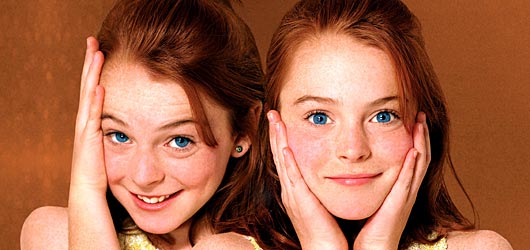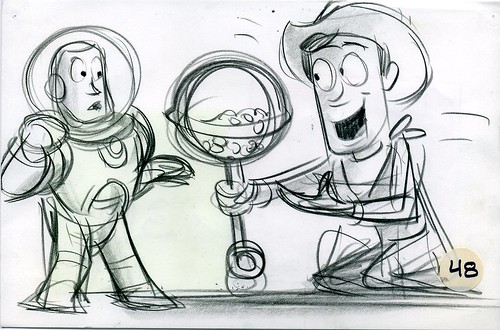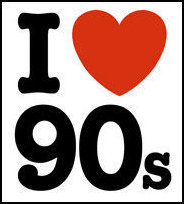
There's nothing quite like letting sadistic young children play God. When virtual pets burst onto the scene in the mid-nineties, toy manufacturers put the fragile lives of these pixelated playmates into the sometimes malevolent hands of careless children. Sure, most of these kids meant to feed and care for these miniature en-egged virtual beings, but things just sort of came up. You know.
Also, it probably doesn't send the most serious life-or-death message about caring for a pet to attach it to a handy keychain. I don't see any household kittens or puppies conveniently hanging from the zipper of a kids' backpack. Then again, real pets don't have a reset button, so perhaps it's not the most fair comparison.
Admittedly virtual pets didn't necessarily lend themselves to teaching responsibility. There was really no consequence for allowing your virtual pet to die, unless you somehow managed to develop a deep emotional bond to this poorly animated blob-with-eyes that lived in your plastic egg keychain. I'm willing to give these alleged highly sympathetic youngsters the benefit of the doubt, but they certainly weren't my Tamagotchi-toting peers.

Tamagotchis were sort of like a highly primitve version of the Sims: as a virtual pet owner, you were expected to feed it, allow it to go to the bathroom, entertain it, making sure it slept, and monitor its general happiness and well-being. In the early models, the "fun" factor was pretty straightforward. The very act of feeding and cleaning up after a blinking pixelated image was supposed to be sufficient entertainment. This was no-frills fun at its bare-bones finest.
A late-90s "Angel" model. For some reason, they thought it wise to make this commercial simultaneously completely terrifying and likely to offend multiple religious sects. Kudos, Tamagatchi. Kudos.
Miraculously, the concept clicked. Children adored these things. They couldn't get enough. They wanted their house key-rings and backpacks to clack with the delightful click-click-click of multiple coexisting virtual pets. Immediately following their release in 1996, the product sold over 40 million units worldwide. Let me repeat that. 40 million. Pretty incredible.
For parents, the decision to purchase a virtual pet over a real living, pooping, money-bleeding animal was a pretty obvious one. Either your child could beg and plead and throw themselves screaming onto the floor swearing that they'll take care of that new puppy, or you can satiate them with a cheap little piece of plastic that does double duty on surreptitiously teaching them the virtue of responsibility. Talk about killing two birds with one stone. If you'd let them take care of that real parakeet, they'd only get to kill one.
Once these babies hatched, their fate was literally in your hands. Though early models were primitive, they were capable to developing personalities. Feed it and care for it and it becomes lovable, content, and well-behaved. Treat it poorly and you get a vicious, angry, monstrous little guy who's just begging you to press that reset button and restart his sad little life. The choice is yours.
There was always that one kid (most likely the same one who kicked bunnies and stomped on cute little field mice) who derived some sick pleasure from making his Tamagatchi's life a virtual hell. Intentionally neglectful, he or she would get a real kick out of watching their precious virtual pet shrivel and die, refusing to respond to its most basic needs. Unfortunately for us concerned virtual pet defenders, the ASPCA had yet to classify Tamagatchi abuse as something worthy of sponsorship. Keep fighting the good fight, friends. We'll get there.
In general, the issue with designating even this virtual responsibility to children was that these things were constantly needy. Never mind the fact that as over-programemd children we had to go to school and soccer practice and piano lessons. Our Tamagotchis required incessant care. Leave the sound on and your mini egg would beep frequently, your little Tami begging for attention and food. Even disabling the sound wasn't enough to quiet the little guy's neediness: the lights would flash again and again until you finally gave in and attended to your virtual charge.

In no time at all, schools took notice of the distracting toys and many instituted classroom bans to prevent children from caring for their pets on school time. While some adults contended that the pets helped kids learn discipline and develop a sense of responsibility, most agreed that these things were pretty damn annoying when they were trying to review times tables or clarify parts of speech. The pets became contraband and grounds for heartbreaking teacher confiscation. Sure, it was unlikely that we'd ever bring a real live hamster or guinea pig to class with us to monitor its well-being, but it was the principle of the thing.
Despite these setbacks, the toy remained wildly popular. Numerous knockoffs emerged, including the successful Gigapets and Nanopets. Before long, the virtual pet marketplace was flooded with a plethora of different types of animal, human, and alien egg keychains. Luckily for the current young population, these things are making a comeback and even feature a pause button to allow them time away from the virtual enslavement of their little charge. Sure, now these kids have Webkinz and all other impressive types of newfangled technologically tied toys, but somehow the simplicity of a Tamagotchi remains an appealing credential for parental purchase.
In case this reminiscence failed to satisfy your inner virtual pet caretaker, fear not. If all this wasn't enough, maybe you could use a little web-based support in the form of a new song by pop duo Looner. They obviously loved their Tamagatchi as much as you did, perhaps more as they've recently released a single detailing said love. Enjoy.
Check it out:
Virtual Pets for iPhones





















